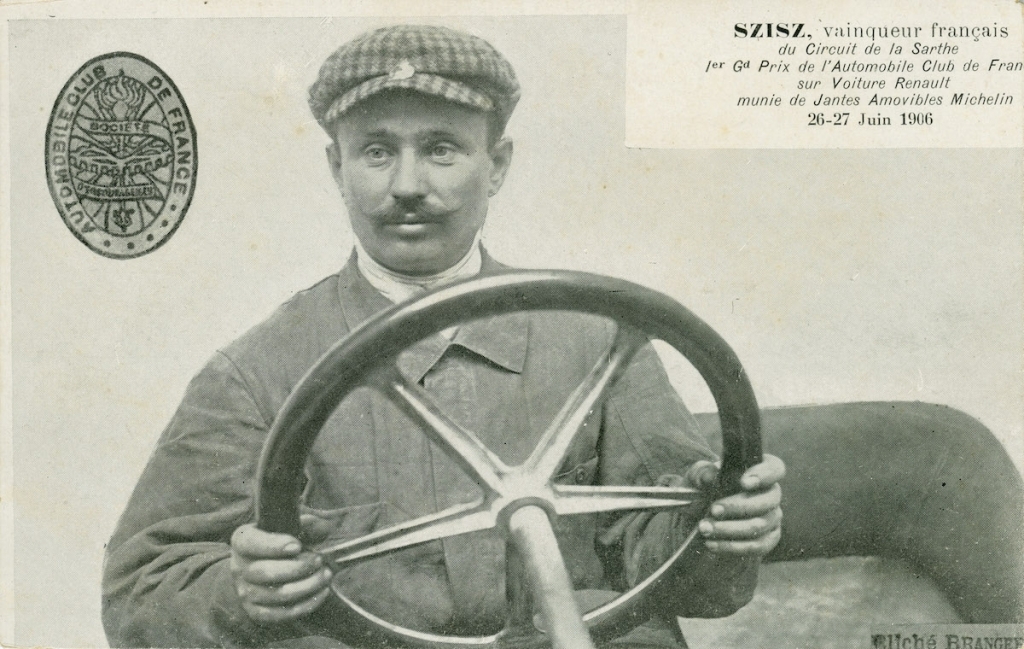
Although races involving cars were taking place as early as 1894, the true birth of professional motorsport happened on 26-27 June 1906 when the first French Grand Prix was staged at the iconic Le Mans circuit. The winner was a Hungarian called Ferenc Szisz, and this is his story.
The family of Ferenc Szisz came from the small village of Oroszvár, which is today known as Rusovce and is located in Slovakia. The meaning of his family name is unclear, but its German origin cannot be doubted. The name Szisz may have originated from the German word süss, which means sweet, but the Hungarian verb siess cannot be excluded; the latter is almost an interjection, meaning to make haste in English. The perfect name for a racing driver, in other words.
Ferenc Szisz’s father was born in 1830, the same year as Emperor Franz Joseph I of Austria. After serving as a stable boy in the Hungarian war for independence, János Szisz became a veterinarian and settled down in Szeghalom, Békés county, where he bought a house and raised three daughters and four sons. The three older Szisz boys didn’t share their father’s love of horses. Gyula went to the capital to became a merchant, János became a coach manufacturer in Doboz and Ferenc learned the art of copper casting. Only the youngest of the boys, József became a rider: he was an excellent jockey, but died very young after a fall in a military race.
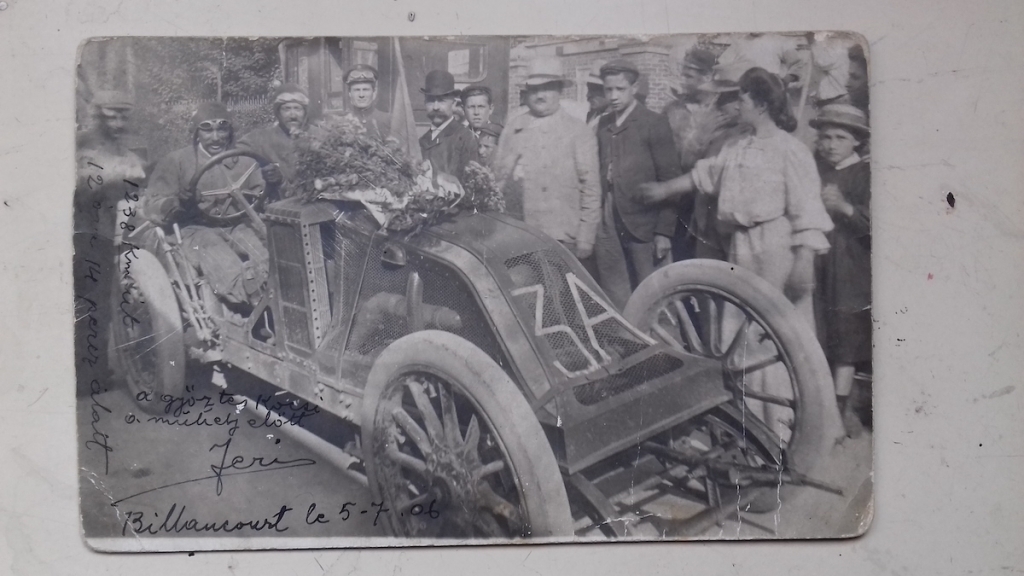
Having learned how to handle metals, Ferenc joined his brother János working on the railways in the early 1890s. But he soon got itchy feet and decided to hit the road and learn a trade. Technology was developing rapidly at the time, and Ferenc showed great interest in the new fields of automobiles and aviation. After working for some time in Budapest, Szisz travelled to Vienna, Munich and Alsace. In Munich, he worked for the Bosch company where he became familiar with the electrics of nascent motor vehicles. After meeting Austrian girl Elisabeth Dorn in Alsace, the two travelled to Paris, where Szisz began work in a factory producing turning machines.
Renault
Szisz was introduced to Renault when the French carmaker bought a turning machine and needed an engineer to set it up. The young Hungarian made an excellent impression and was soon invited to join the company where he began working in the machine tool division but soon transferred to the car manufacturing plant. Cars of the time were hand finished, requiring meticulous work to forge the pistons, main axles and bearings.
Although no written records have been found to prove it, there is little doubt that Szisz received theoretical training and he was sent to courses during these years. Although he worked in a team with more experienced colleagues, Szisz had also picked up valuable knowledge and expertise on his travels. The Hungarian was soon promoted to become the mechanic of Marcel Renault, one of the founders of the company and an accomplished racer himself. In those days, the mechanic sat next to the driver and they shared the same fate during a race. It was Szisz’s task to prepare the race car for racing. Ferenc had already learned how to drive, perhaps when working for Bosch in Germany. Marcel Renault did not test his cars; this was a job for his mechanic. The car also had to be driven to the race track; another job for the mechanic. Szisz was also responsible for guarding the car at night to prevent theft or tampering.
Racing Career
In 1902 Ferenc Szisz was chosen to be the race mechanic of Louis Renault before graduating to the driving seat himself following the death of Marcel Renault in the 1903 Paris-Madrid race. Szisz showed early promise, recording the 5th fastest time in the qualifiers for the 1905 Gordon Bennett Cup at the Circuit d’Auvergne near Clermont-Ferrand. In October of the same year, Renault and many other French and Italian car manufacturers sent teams to the United States to take part in the Vanderbilt Cup in Long Island, New York. Ferenc Szisz finished 5th with his Renault in a race that included the biggest stars of the era, including Felice Nazzaro and Louis Chevrolet of the Fiat team and the winner, Victor Hémery in a Darracq.
In 1905, Szisz was appointed head of the testing department at Renault, a position that often interfered with his racing exploits. Nevertheless, Szisz was confirmed to start the inaugural French Grand Prix on 26-27 June 1906 with the Renault team. With his mechanic and friend Marteau by his side, he won the race at the wheel of a Renault AK 90CV Renault with race number ”3A”. The race was run over two days on a 103.18km triangle-shaped course near Le Mans. After six laps on the opening day, the starting list of 32 cars had been halved. A further five cars retired during the final six laps on the second day, partly due to the hot weather. Szisz finished more than 32 minutes ahead of the runner up, helped in part by a technical innovation in his 90-horsepower car, which was less powerful than many other vehicles but had a rear axle from a military vehicle which enabled the changing of inflated tires on the rims, without even touching the spokes. The tyres were inflated in advance and hung in the back, so when the race cars got punctures on the battered gravel roads, others started to take down the wheels or mend the tyres, but Szisz changed his tyres next to no time by turning a few screws and drove on.
Szisz finished the 1238.16 km race in 12 hours, 14 minutes and 7 seconds, recording a sensational average speed of just over 100km/h. His performance was hailed all around Europe, earning the 32-year old Hungarian a level of fame that saw him featured on postcards and posters. He also received 45 000 francs for the victory, a huge amount in those days, and received French citizenship thanks to an accelerated procedure.
Szisz’s Grand Prix victory and the commercial success of the competition soon led to the organization of other races in Europe. Next year Italian Felice Nazzaro (who finished second behind Szisz in 1906) won the second French Grand Prix. Ferenc Szisz, who had become a national hero, took part in the 1908 race, but did not finish. Technical problems also put pay to his chances of victory in the Savannah Grand Prix in Georgia, which was organized by the American Automobile Club.
Szisz left Renault at the beginning of 1909 and opened his own garage in Neully-sur-Seine, specializing in Renault and Delaunay-Belleville cars. After a hiatus of six years, Fernand Charron convinced Szisz to get back behind the wheel of an Alda car in July 1914 at the French Grand Prix in Lyon. It was won by Mercedes pilot Christian Lautenschlager as Szisz, driving with an honorary number 1 on his car, retired in the second half of the race after an accident.
The advent of the First World War brought European car racing to a temporary halt. Ferenc Szisz voluntarily enlisted in the French army, where he served as a leader of the Algerian offensive forces until he was taken to hospital with typhus in Morocco. Having returned from the front, he continued his car mechanic business, specializing in Renault and Citroën models.
Later Life
Although he had lived abroad for many years, Szisz maintained a relatively close relationship with his family back in Hungary. He returned to Vienna now and again, so most probably he met his siblings and maybe even his parents as well. Although Ferenc Szisz had lived with Elisabeth (Betti) Dorn for years, they had never married and never had children. A plan was hatched that saw two daughters of János Szisz, brother of Ferenc, travel to France and become defacto step-children, but only on the condition that Ferenc would marry Aunti Betti.
The affection of Szisz toward his relatives never surpassed correspondence and the acceptance of visitors. He never visited home again. He had fought for the French Army in the First World War and was afraid that the authorities in Hungary would find out about it, retaliating as soon as he stepped on Hungarian ground. He came many times as far as Vienna, but never closer.
By the second half of the 1930s, none of the Szisz-brothers was alive in Hungary anymore. Ferenc Szisz’s remaining relatives in Hungary were aware of the extraordinary and sensational success their “Uncle Feri” had achieved in France, but probably could not grasp in its entirety the importance of his victory in the first Grand Prix. They only saw or felt that Ferenc had achieved something abroad. He’d had a good life and become a wealthy man. They counted him not as a famous race-car driver, but as a rich uncle. They were proud of him, as he received the Legion of Honour, though France was the enemy in the Great war, and he lived there. The younger generation of the Hungarian family received a notification about the death of Ferenc Szisz in 1947. It is possible that it was sent immediately by his wife after Szisz died in 1944, but the letter had been drifting around for a long time somewhere due to the war.
The Imposter
In the mid-1950s, an interesting figure appeared in the family history; the fake Szisz. A field-guard called Ferenc Szisz, who lived in Tiszaszentimre, got wind of a big opportunity when he was mistaken for the Grand Prix winner. Claiming to be the long-lost Hungarian racer, the fake Szisz was paraded around Hungary. News of the former hero still being alive even reached the Renault company, who fell for the story even though the real Szisz had a museum dedicated in his honor in France, not to mention his grave in Auffargis. Renault went so far as to invite the old man to sit in a new Renault at the 1956 International Fair in Budapest, then drive a few laps around the Hotel Gellért.
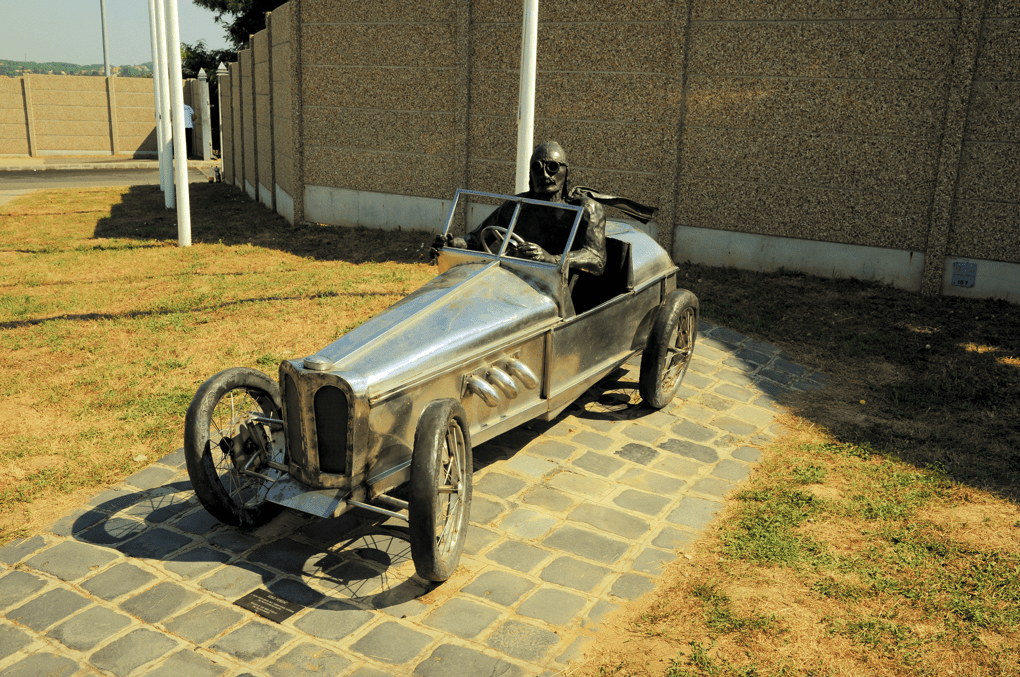
It didn’t take long for it to become clear that this was not the real Szisz. Not only did it turn out that he could not speak French, he had never driven a car in his entire life! When it was time for his lap of honor, the imposter hopped confidently into the car, but was unable to work the clutch, throttle or gear shift! Still, he posed for a few photographs and shook some hands before taking the train home to Tiszaszentimre as the embarrassed Renault people made a hasty exit from the Hungarian capital.
Legacy
It would be many years before Ferenc Szisz was formally recognized in his country of birth. A sculpture of Szisz and his car by László Babos was erected at the entrance to the Hungaroring in 2003. A monument in his memory was also unveiled in Szeghalom in 2006, on the centenary of his historic victory. Ferenc Szisz still does not have a significant cult following in Hungary. He didn’t become a Hungarian and his name is barely known, though every history of Grand Prix racing starts with his name.

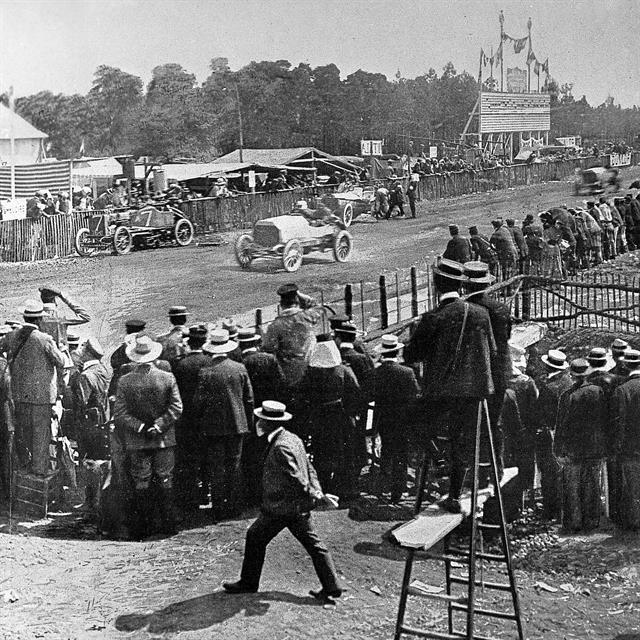
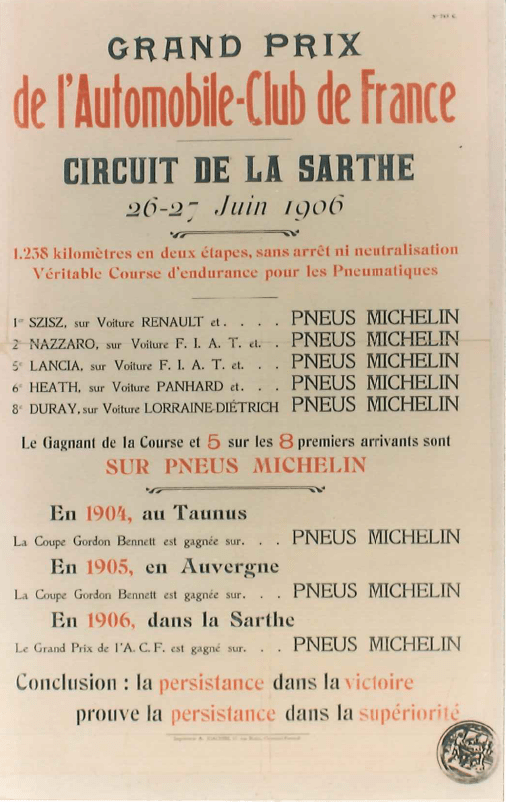
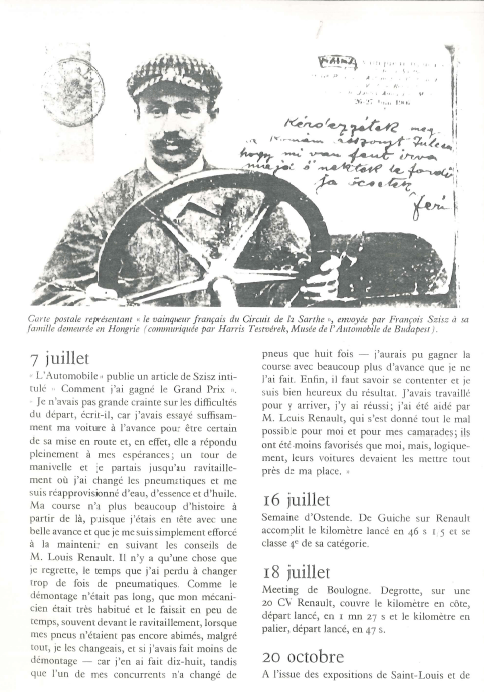
Great story and a nice example of how life was before the modern times.
bonjour, juste une petite correction sur la coupe gordon bennett 1905, Ferenc SZISZ n’a pas participé à la course du 5 juillet 1905, il ne s’est classé que 5ème des éliminatoires qui ont eu lieu le 16 juin 1905
cordialement .